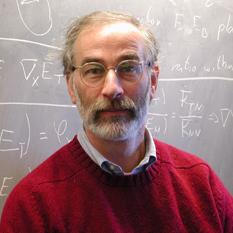Steven Zucker
Ph.D., Drexel University
Interests:
Computational vision is at the heart of robotics and biomedicine, but it is primitive when compared with the human visual sense. Humans demonstrate, effortlessly, enormous visual flexibility and generality, unaware of human vision's staggering complexity. But more than one-third of the primate brain is dedicated to processing visual information.
How do we characterize the function of billions of neurons in algorithmic terms? Zucker is putting the requirements of vision systems together with insights from neurophysiology and applied mathematics to develop an abstract theory of computational vision. Based on differential geometry, his approach leads to methods of curve detection, shading and texture analyses, stereo, color, and generic shape description. The key to studying and modeling vision is an interdisciplinary perspective, integrating computation, neuroscience, and mathematics.
Selected Publications:
- Geometrical Computations Explain Projection Patterns of Long-range Horizontal Connections in Visual Cortex, O. Ben-Shahar, Steven Zucker, 2003, Neural Computation, 16(3), 445-476.
- Sketches with curvature: The curve indicator random field and Markov processes , J. August, Steven Zucker, 2003, IEEE Trans. Pattern Analysis and Machine Intelligence, 25(4), 387-401.
- Hamilton-Jacobi Skeletons , K. Siddiqi, S. Bouix, A.R. Tannenbaum, Steven Zucker, 2002, Int'l. J. of Computer Vision, 48(3), 215-232.
- Complexity, Confusion, and Perceptual Grouping. Part I: The curve-like representation, B. Dubuc, Steven Zucker, 2001, Int'l. J. of Computer Vision, 42(1/2), 55-82.
- Complexity, Confusion, and Perceptual Grouping. Part II: Mapping Complexity, B. Dubuc, Steven Zucker, 2001,Int'l. J. of Computer Vision, 42(1/2), 83-115.


